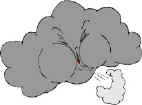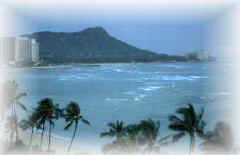|

Classification
of the winds

Anybody have heard about the Beaufort
wind scale, in various weather reports, but without really know what it
is. Indeed, except the specialists, only a few
persons know the signification of the various graduations of this scale.
The Beaufort wind scale is used by the
sailors and the meteorologists to indicate the wind speed. It was
invented in 1805 by the Irish hydrograph Francis Beaufort. The original
characteristics were modified in 1946 ; the scale used today on sea is
presented in the following table.
| Beaufort
wind scale |
Speed
in km/h |
Description
|
Effects
observed on the sea
|
| 0 |
Under
1 |
Calm |
Sea
is like a mirror |
| 1 |
1
- 5 |
Light
air |
Ripples
with appearance of scales; no foam crests |
| 2 |
6
- 11 |
Light
breeze |
Small
wavelets; crests of glassy appearance, not breaking |
| 3 |
12
- 19 |
Gentle
breeze |
Large
wavelets; crests begin to break; scattered whitecaps |
| 4 |
20
- 28 |
Moderate
breeze |
Small
waves, becoming longer; numerous whitecaps |
| 5 |
29
- 38 |
Fresh
breeze |
Moderate
waves, taking longer form; many whitecaps; some spray |
| 6 |
39
- 49 |
Strong
breeze |
Larger
waves forming; whitecaps everywhere; more spray |
| 7 |
50
- 61 |
Near
gale |
Sea
heaps up; white foam from breaking waves begins to be blown in
streaks |
| 8 |
62
- 74 |
Gale |
Moderately
high waves of greater length; edges of crests begin to break
into spindrift; foam is blown in well-marked streaks |
| 9 |
75
- 88 |
Strong
gale |
High
waves; sea begins to roll; dense streaks of foam; spray may
begin to reduce visibility |
| 10 |
89
- 102 |
Storm |
Very
high waves with overhanging crests; sea takes white appearance
as foam is blown in very dense streaks; rolling is heavy and
visibility is reduced |
| 11 |
103
- 117 |
Violent
storm |
Exceptionally
high waves; sea covered with white foam patches; visibility
further reduced |
| 12 |
Over
118 |
Hurricane |
Air
filled with foam; sea completely white with driving spray;
visibility greatly reduced |

|
|
|





